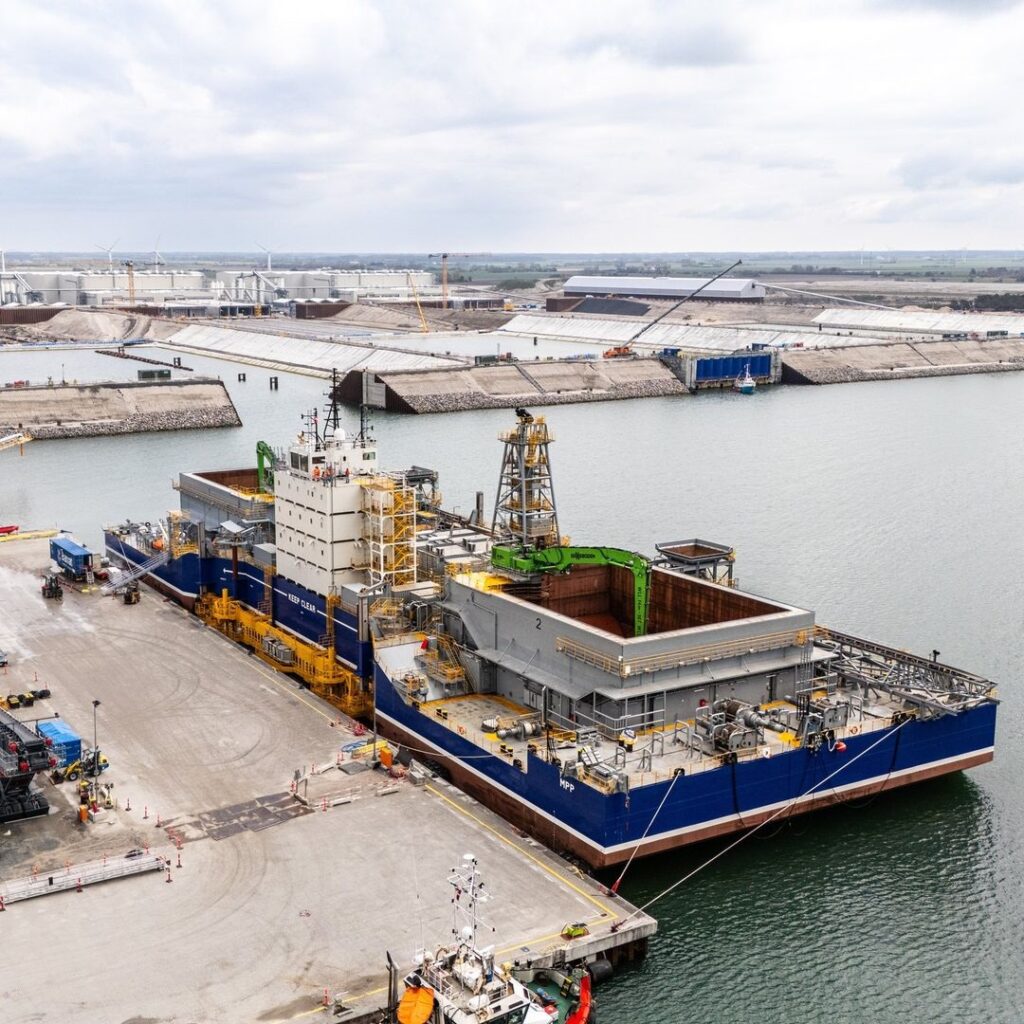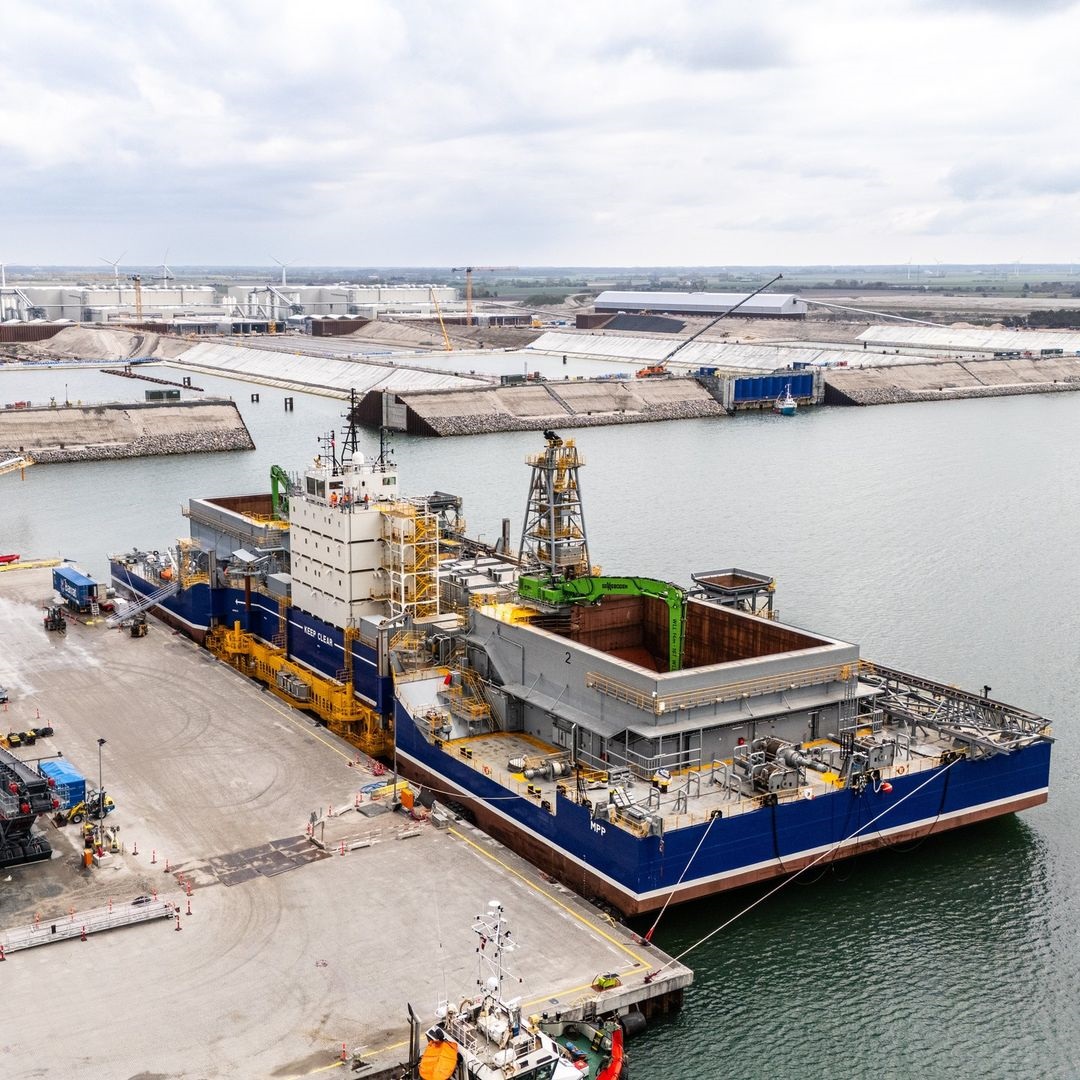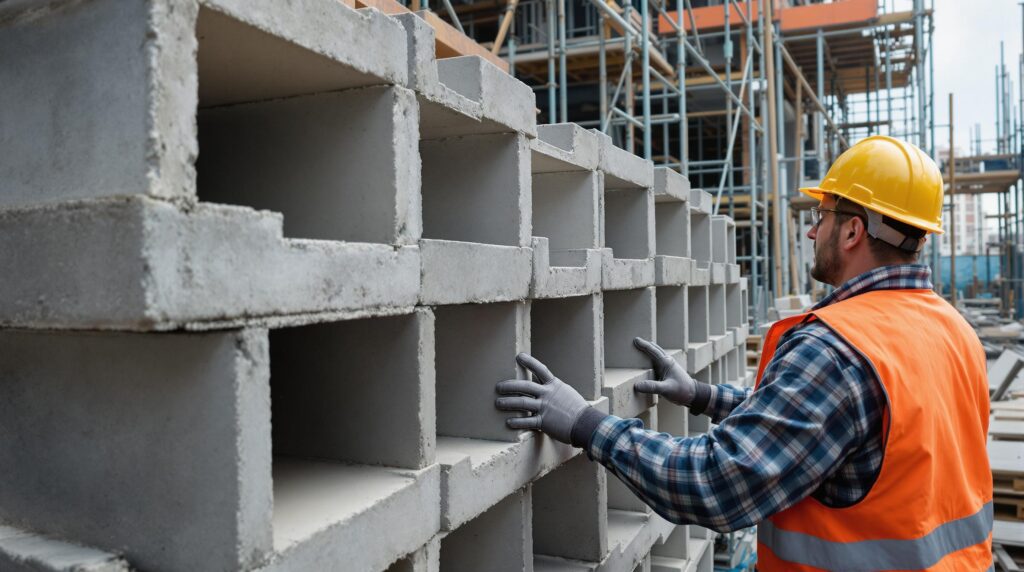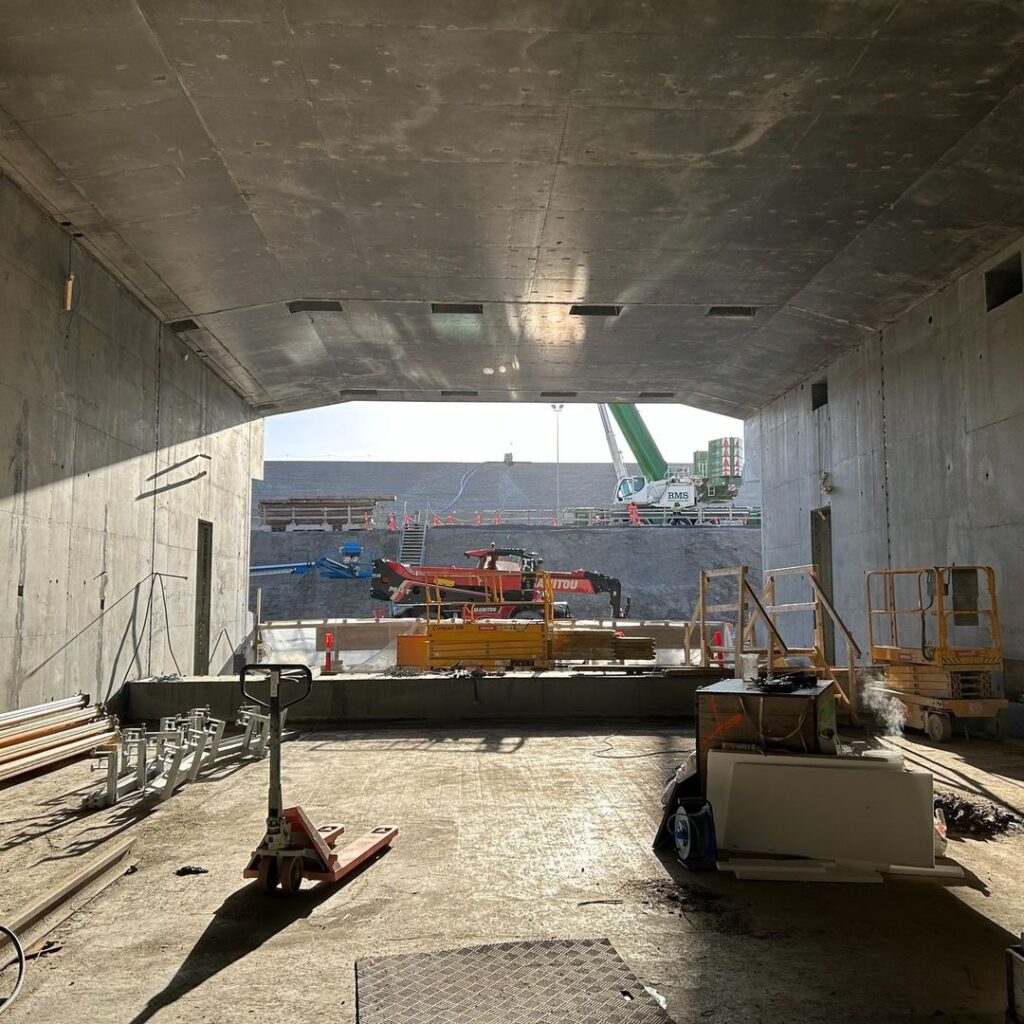Fehmarnbelt | Purpose-built vessel arrives to line tunnel trench with gravel ‘cushion’

This post was originally published on this site
A unique multi-purpose pontoon (MPP) has arrived at the Fehmarnbelt construction site in Denmark to begin laying gravel in the 18km trench as a “cushion” for the 73,500t tunnel elements.
The Fehmarnbelt Fixed Link is a new road and rail tunnel being constructed between Denmark and Germany. It will comprise 89 precast concrete elements that will be laid end to end with 15mm precision on the seabed.
Dredging of the 18km trench between the Danish island of Lolland and the German island of Fehmarn took almost three years and was completed earlier this month. The dredging work by Fehmarn Belt Contractors – featuring Boskalis and Van Oord – saw around 15Mm3 of soil removed from the seabed.

The MPP at the construction site at Rødbyhavn on Lolland, Denmark
The MPP has now arrived at the harbour of the construction site at Rødbyhavn to carry out the next step – laying out an even “cushion” of gravel in the trench on which the tunnel elements will be placed.
Project promoter Femern A/S says that the MPP “has one of the most important tasks on the Fehmarnbelt project, and there are no other vessels in the world that can do exactly what this vessel can”.
The vessel is equipped with a remote controlled “submersible dumping tool” which is lowered up to 47m below the water into the tunnel trench.
Gravel is then sent down a pipe into this tool, which moves from side to side “like a 3D printer” and distributes the gravel evenly in the trench in “beams”.

The MPP at the construction site at Rødbyhavn on Lolland, Denmark
The MPP was designed and constructed by Crist at its shipyard in Gdynia, Poland. Specialist ship design and engineering firm StoGda was also involved in detailed designs.
The vessel is 130.2m long (149m including conveyor belts) and 48m wide, weighing in at 17,577t. It is equipped with two gravel “bunkers”, each with capacity to hold 7,000t of the aggregate.
The vessel can accommodate a crew of up to 19, who can work in two shifts.
Watch a video about the MPP creation below.
Like what you’ve read? To receive New Civil Engineer’s daily and weekly newsletters click here.




Responses